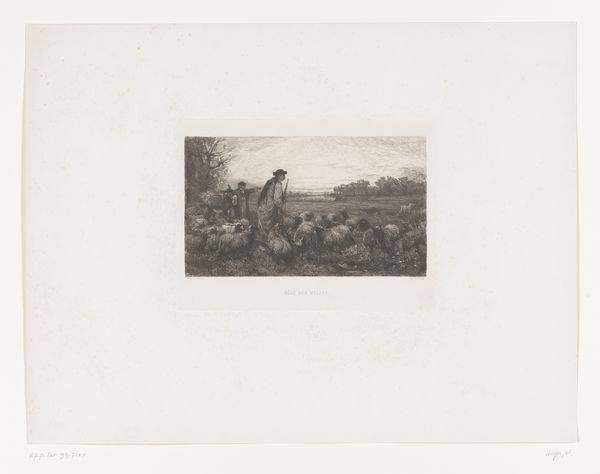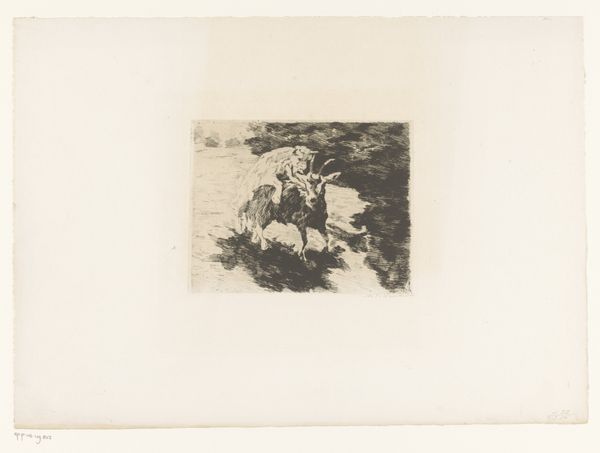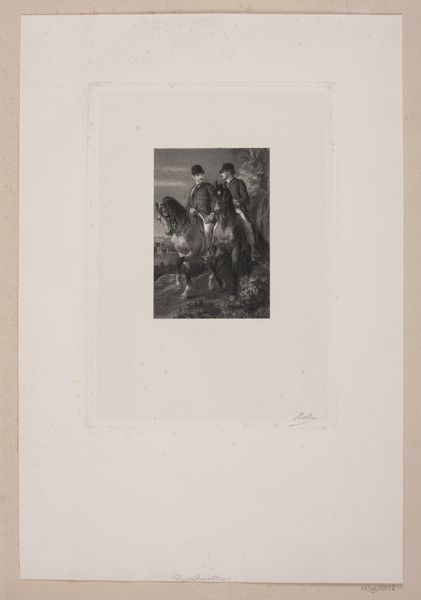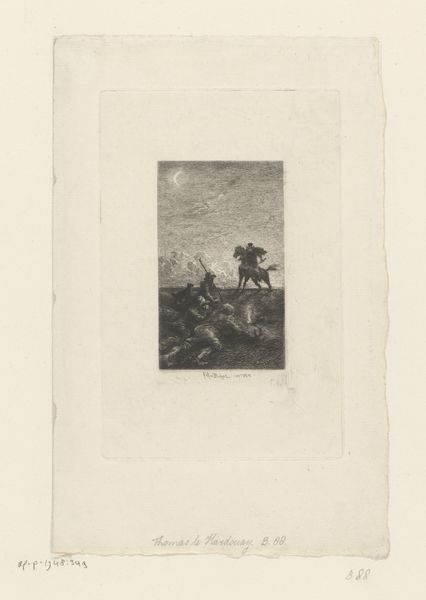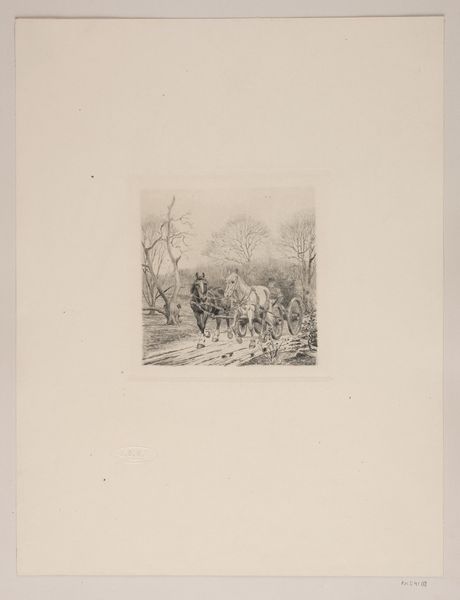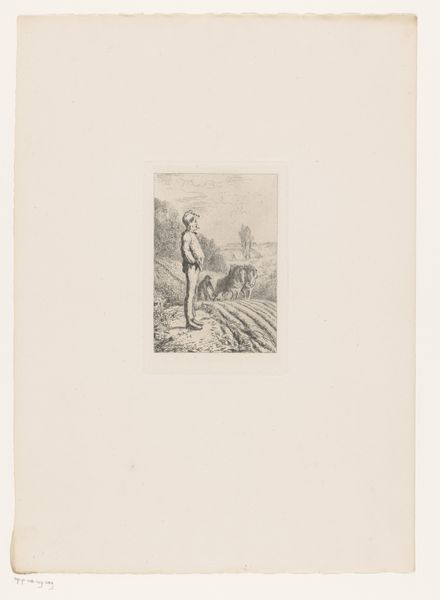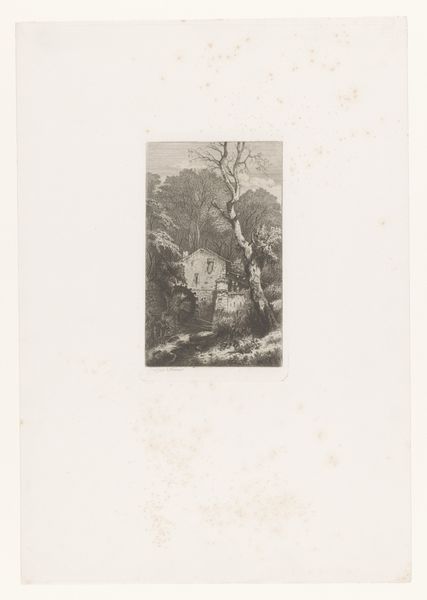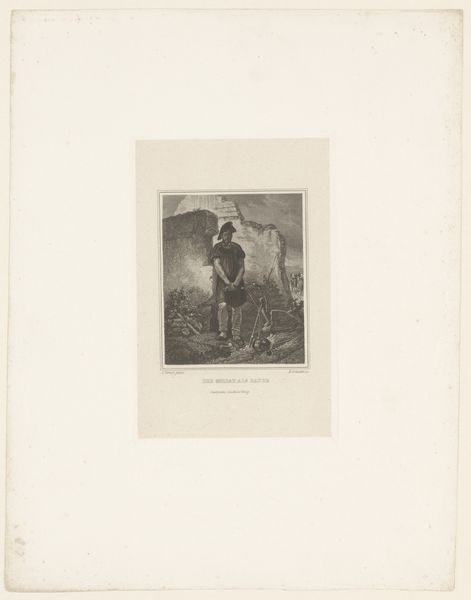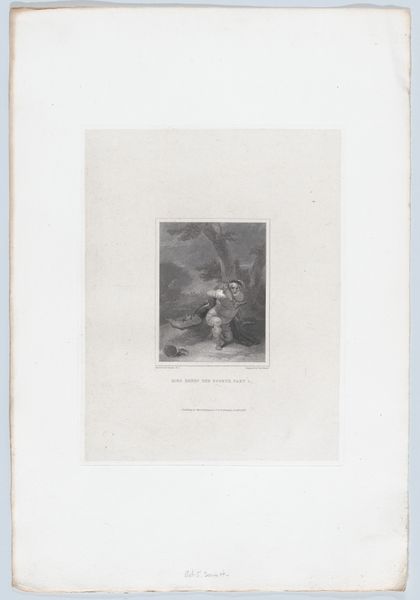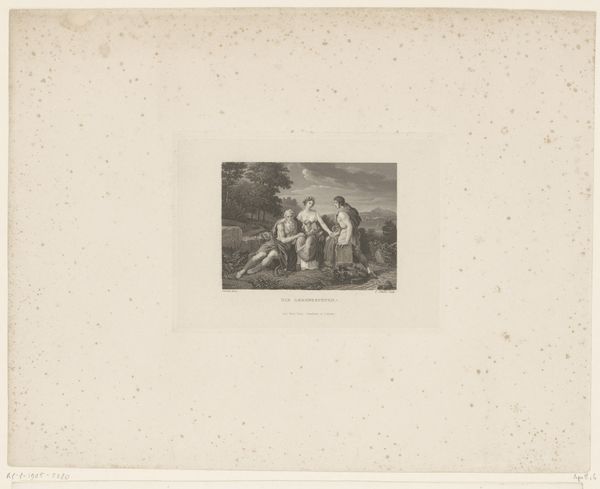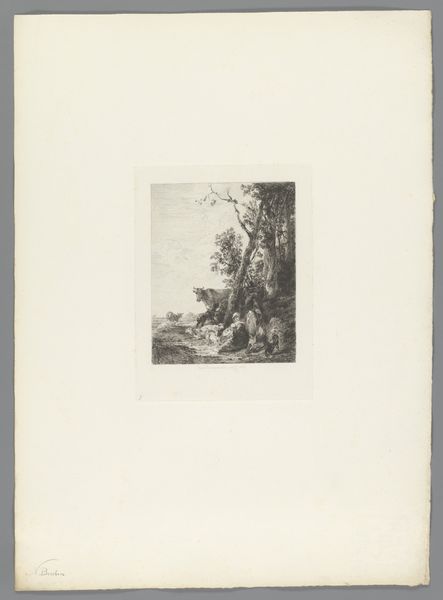
drawing, print, etching
#
portrait
#
drawing
# print
#
etching
#
landscape
#
genre-painting
Dimensions: height 213 mm, width 164 mm
Copyright: Rijks Museum: Open Domain
Curator: This is Nikolay Semyonovich Mosolov's "Ruiter bij een rustend gezin," a drawing and etching printed sometime between 1857 and 1914. What strikes you immediately about it? Editor: It feels… still. Like a captured moment in a story we only get a glimpse of. There’s a quiet intensity, almost somber, despite the implied narrative of rest and journey. Curator: I see that. Considering the time, it might be useful to understand the evolving roles of the peasantry within the backdrop of late 19th-century Russia and this piece gives them a centrality, right? The composition isn't centered on the rider but the family resting. Editor: Exactly! And even though the rider is literally elevated on horseback, the eye keeps drifting back to the family. There’s this incredible contrast between his implied mobility, his almost performative watchfulness, and their grounded, communal rest. Curator: Let's consider genre-painting; these were often exercises in constructing national identity. But it’s vital to examine, within this landscape of identity, how it may be participating in a social hierarchy of Russian identity. The materials too: etching and print offered broad distribution. Editor: The print medium is really interesting here! There's that democratic availability you just mentioned, and that creates its own tension, you know? The artwork portrays this pastoral scene with implied social relations that can be viewed by people across socioeconomic lines. Curator: Right, the printmaking invites discussions about distribution, access, and viewership. How images and narratives circulated – and were perhaps even consumed in disparate social spaces. It challenges a passive engagement. Editor: It's such a deceptively simple scene, isn't it? I keep finding new things: the bare tree in the background, a hint of smoke perhaps from a small fire. Each detail contributes to this delicate atmosphere. Curator: I concur. Mosolov invites us to consider more than a simple depiction; instead, he prompts a nuanced meditation on society, labor, and rest. Editor: And maybe also on the fleeting nature of these intersections, these temporary pauses within larger journeys. So lovely, thanks. Curator: Indeed, a testament to the era.
Comments
No comments
Be the first to comment and join the conversation on the ultimate creative platform.
